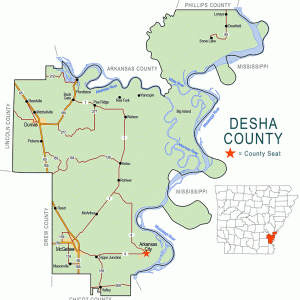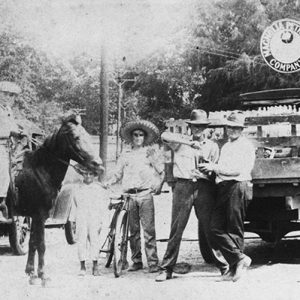calsfoundation@cals.org
Tillar (Drew and Desha Counties)
| Latitude and Longitude: | 33º42’44″N 091º27’10″W |
| Elevation: | 148 feet |
| Area: | 0.78 square miles (2020 Census) |
| Population: | 172 (2020 Census) |
| Incorporation Date: | September 11, 1907 |
Historical Population as per the U.S. Census:
|
1810 |
1820 |
1830 |
1840 |
1850 |
1860 |
1870 |
1880 |
1890 |
1900 |
|
– |
– |
– |
– |
– |
– |
– |
– |
– |
– |
|
1910 |
1920 |
1930 |
1940 |
1950 |
1960 |
1970 |
1980 |
1990 |
2000 |
|
180 |
350 |
267 |
229 |
239 |
232 |
236 |
280 |
221 |
240 |
|
2010 |
2020 |
|
|
|
|
|
|
|
|
|
225 |
172 |
|
|
|
|
|
|
|
|
Located on Highway 65 near Bayou Bartholomew, the second-class city of Tillar stands mostly in Drew County, although its southeast corner is in Desha County. Built on the railroad in the 1870s, the small city is a minor agricultural center for neighboring portions of Drew and Desha counties.
Evidence of prehistoric residents of the Tillar area was found in an Indian mound excavated by Edward Palmer in 1882. His discoveries included nineteen whole ceramic pots and pieces of other pots, as well as mussel shell pieces, a tortoise shell, and fragments of a deer antler. The original owners of these items are thought to be ancestors of the Tunica, although identification is not certain.
At the time of European exploration, the Tillar area was on an uninhabited stretch of the Grand Prairie, and it remained uninhabited until after the Civil War, when the Little Rock, Mississippi River, and Texas Railroad Company built a line across the prairie. J. T. W. Tillar, who had risen to the rank of major in the Confederate army, was on the board of directors of the railroad and also provided the land for the railroad depot and surrounding settlement. He also applied for the first post office in 1879. The settlement was named for him. Tillar, in addition to his military career and railroad work, was a merchant in the nearby settlement of Selma (Drew County) and served in the Arkansas General Assembly in 1873–1874, including the time of the Brooks-Baxter War. While he and other storeowners moved their businesses to the new railroad stop, many of them believed that the prairie flatland was less healthy than the higher ground where Selma had been built, so they continued to maintain the older community where their wives and children resided. The businessmen would often spend the week in Tillar and return to Selma for the weekends.
Over time, the settlement of Tillar did grow, and many of the families of Selma eventually moved there. A Methodist congregation was established in 1881, followed later by Presbyterian and Baptist churches. Around 1880, a schoolhouse also was built in Tillar. The Bank of Tillar was established in 1904. It was joined by a rival bank, Citizens Bank, in 1913; two years later, Citizens Bank bought out the Bank of Tillar. In 1906, an African American named William Anderson was lynched just south of Tillar. The community incorporated in 1907, chiefly for the purpose of raising funds to create a water system for the settlement. By 1911, they had constructed a wooden water tank on a fifty-foot tower with a pumping system.
At about the same time that Tillar incorporated, though, the community began to decline. Railroad shops built in McGehee (Desha County) in 1908 eliminated the need for most railroad jobs in Tillar. By 1954, the small city was most noted for its attractive cemetery. In 1977, Tillar’s Main Street was described as being like “a ghost town.” In 1980, however, Tillar was still said to serve the large agricultural interests of its two counties.
Although Tillar at one time had its own elementary and high schools, it is now part of the McGehee school system. Since 2001, it has been home to Cornerstone Christian Academy, which was started by the First Baptist Church of Tillar.
Author Charlie May Simon was born on a farm near Tillar. Tuskegee Airman Marsille P. Reed is also from Tillar. Doctor Corydon McAlmont Wassell lived in Tillar and practiced medicine there between 1909 and 1914.
For additional information:
DeArmond, Rebecca. Old Times Not Forgotten: A History of Drew County. Little Rock, AR: Rose Publishing Company, 1980.
Gholson, Jo-Ann Branch Buckner. “Memories of Tillar.” Drew County Historical Journal 15 (2000): 50–56.
———. “Memories of Tillar, Part II.” Drew County Historical Journal 16 (2001): 36–43.
Leslie, James W. “Tillar and Selma: A Tale of Two Cities.” Pine Bluff Commercial, July 13, 1977, p. 21.
Schexmayder, Charlotte Tillar. “A Tribute to a Town with 267 Population.” Arkansas Democrat Magazine, February 7, 1954, p. 4.
Steven Teske
Encyclopedia of Arkansas History & Culture
 Desha County Map
Desha County Map  Drew County Map
Drew County Map  Tillar Street Scene
Tillar Street Scene 




Comments
No comments on this entry yet.